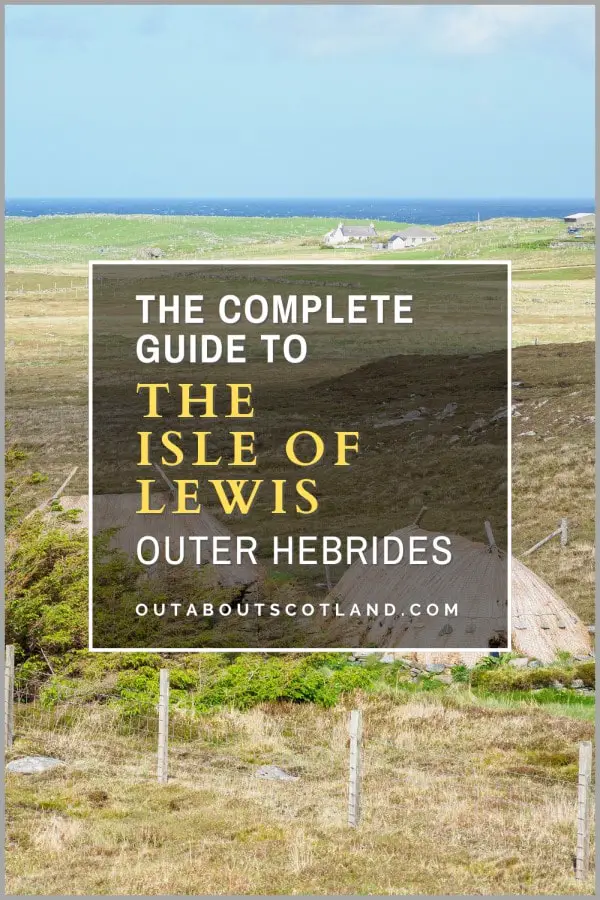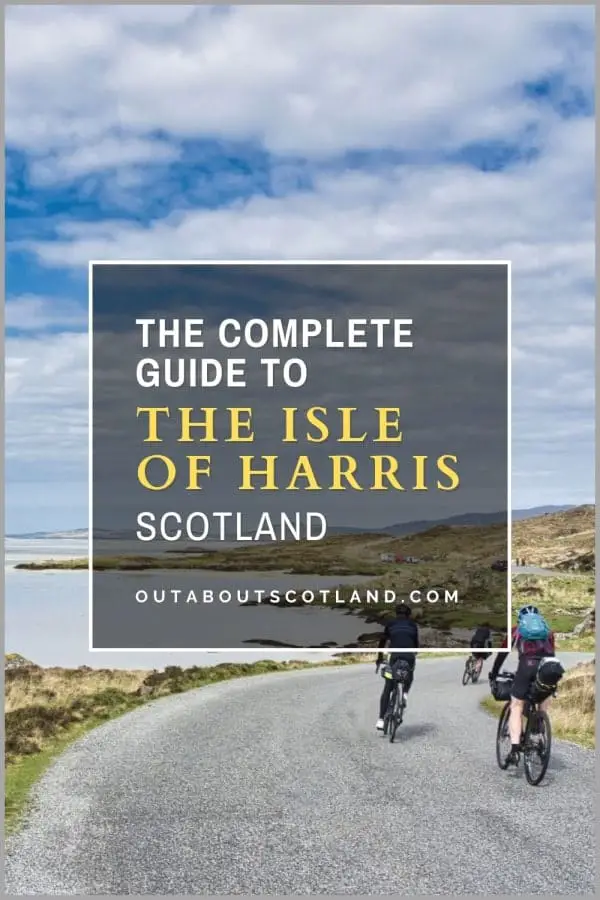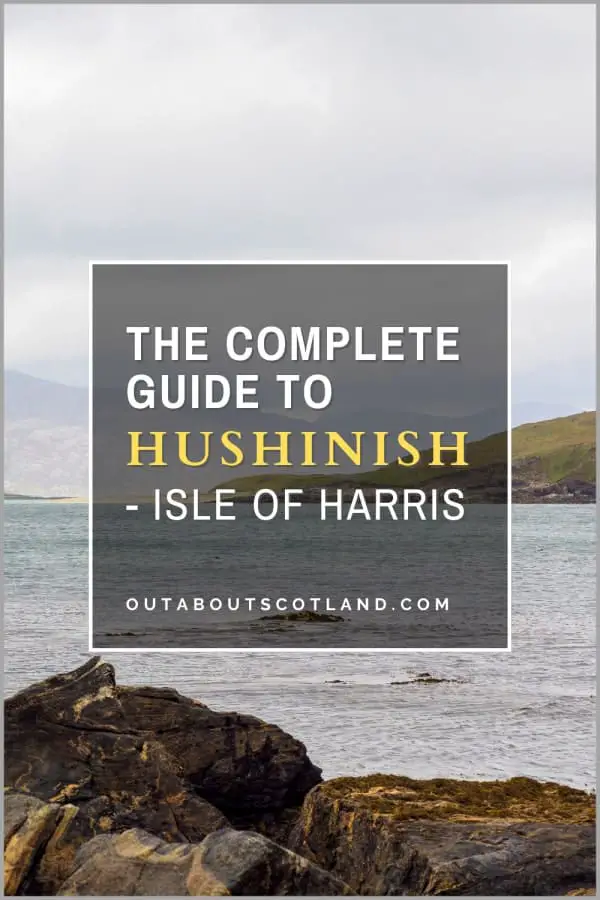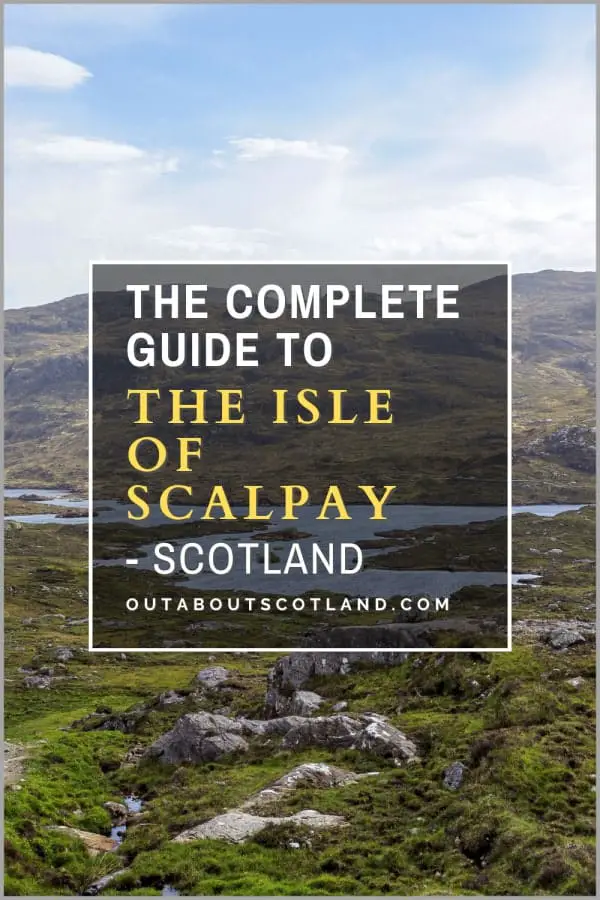Gearrannan Blackhouse Village lies on the southwest edge of the Isle of Lewis, set within a deep cove that offers protection against the crashing waves of the Atlantic Ocean. The village features a number of restored blackhouses—traditional thatched stone-walled dwellings—that served as homes to both people and animals for hundreds of years.
During a visit, tourists can look inside and imagine what life would have been like for the crofters and tradespeople who lived there, as well as enjoy a cafe, gift shop, and scenic coastal walks. Discover this fascinating attraction on Harris and Lewis with this complete visitor guide.
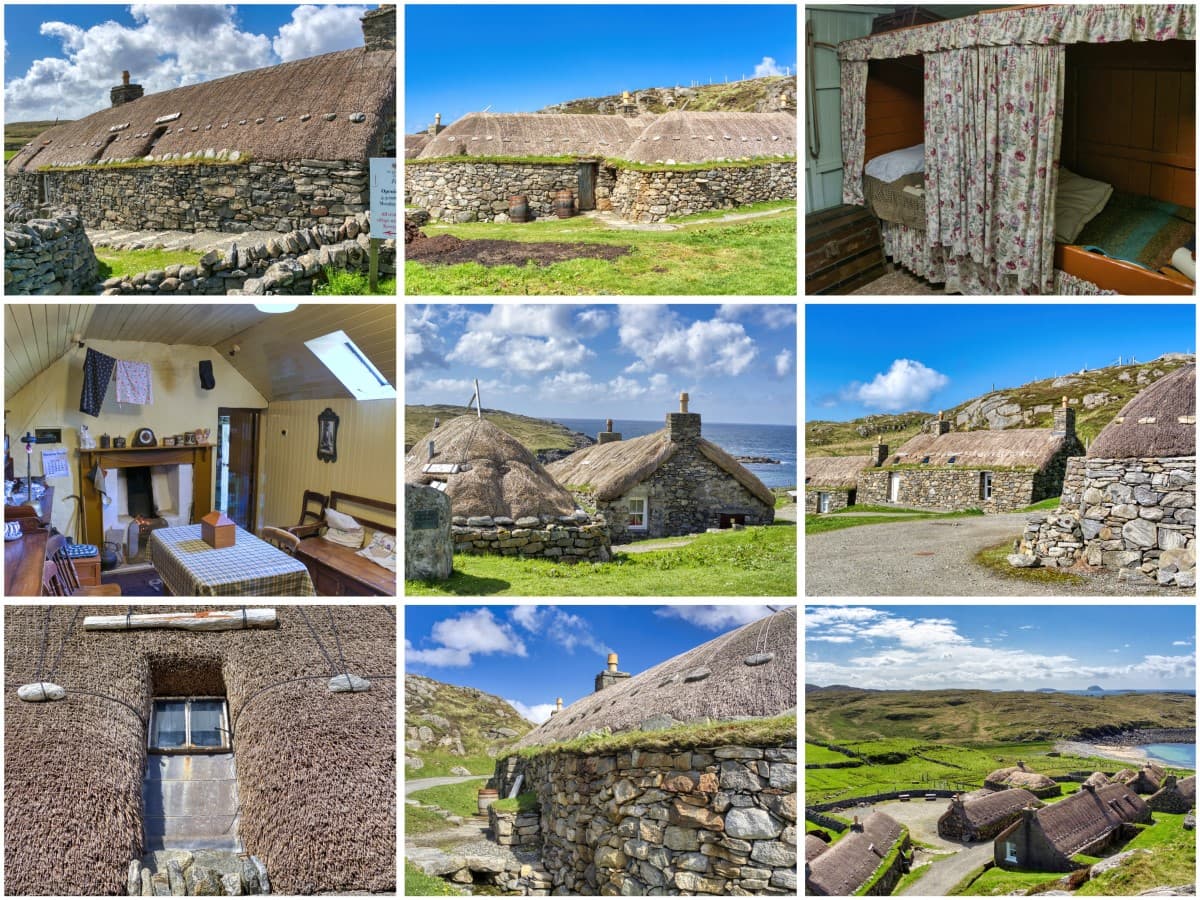
| Address: | Gearrannan, Carloway, Isle of Lewis, HS2 9AL |
| Opening Hours: | Open from 3rd week in March - 3rd week of October. 09:30 - 17:30 Monday - Saturday. |
| Admission Price: | Adult: £3.90, Concession: £3.60, Family £10 |
| Parking: | Free on-site parking |
| Contact: | 01851 643416 info@gearrannan.com |
| Facilities: | Shop, cafe, toilets |
| Photos: | Virtual Tour |
Overview
One of the most interesting aspects of a visit to the Isle of Lewis is seeing the remnants of old (and long-abandoned) blackhouses that were at one time the primary type of dwelling in the Outer Hebrides. These houses can trace their design back thousands of years, and they’ve been found as far north as Orkney, though sadly, there are few left today that are still entirely intact.
At Gearrannan on the southwest coast of Lewis, visitors can experience a traditional blackhouse village thanks to a collection of restored and renovated houses that are now part of a museum and private holiday rentals.
If you’re unfamiliar with the term, ‘blackhouse’ refers to the long, low buildings that are unique to Scotland’s remote islands. Farm animals were housed at one end and people were housed at the other, in a standard design that had thick thatched roofs and even thicker stone walls.
The walls were double-layered and had peat compacted in the gap between them in a form of early insulation, with just a few small windows set into the roof and the walls to allow light in without letting too much heat out.
Due to the ferocity of Scotland’s west-coast winds, the thatch was held in place with netting that was tied down with heavy stones and the corners of the walls were rounded, giving these houses an unusual look that’s unlike any other in Scotland.
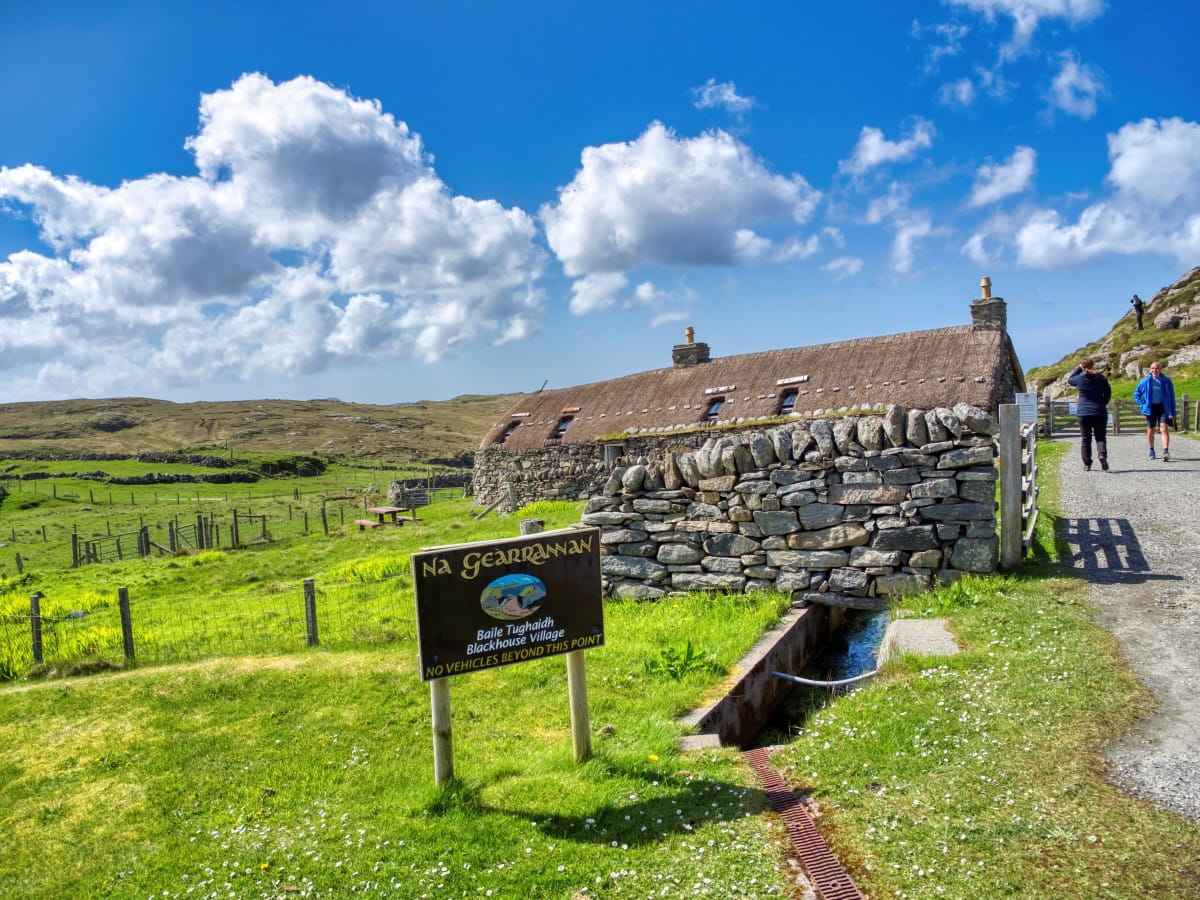
As for the name, well there are a few theories, but it most likely stems from the fact that when new building regulations were introduced at the turn of the 1900s, the blackhouses were abandoned in favour of modern-design buildings that took the nickname ‘white houses’.
‘Blackhouses’ weren’t actually given that name back in the day, but considering how different the two styles of house are, it makes sense they were eventually named as polar opposites. The name blackhouse is also believed to stem from the fact that the earliest examples had no chimney, which meant that soot from the peat-burning hearth had to escape through the thatched roof, leaving behind a thick coating of black soot.
Inside, these buildings are surprisingly big, with a double bedroom set to one end, a living area and kitchen in the middle, and a workshop and animal stables at the opposite end. At first glance, you might imagine they’d be tiny inside, but they’re actually quite spacious, and with a peat fire burning away, they’d have been rather cosy too, although they had plenty of drawbacks such as no running water, no sewerage, and little natural light.
At Gearannan, visitors can explore two blackhouses that have been restored to their original condition. The first is a museum complete with original furnishings, and the second is set up with a video display and information boards that describe what life was like for the islanders when they lived there.
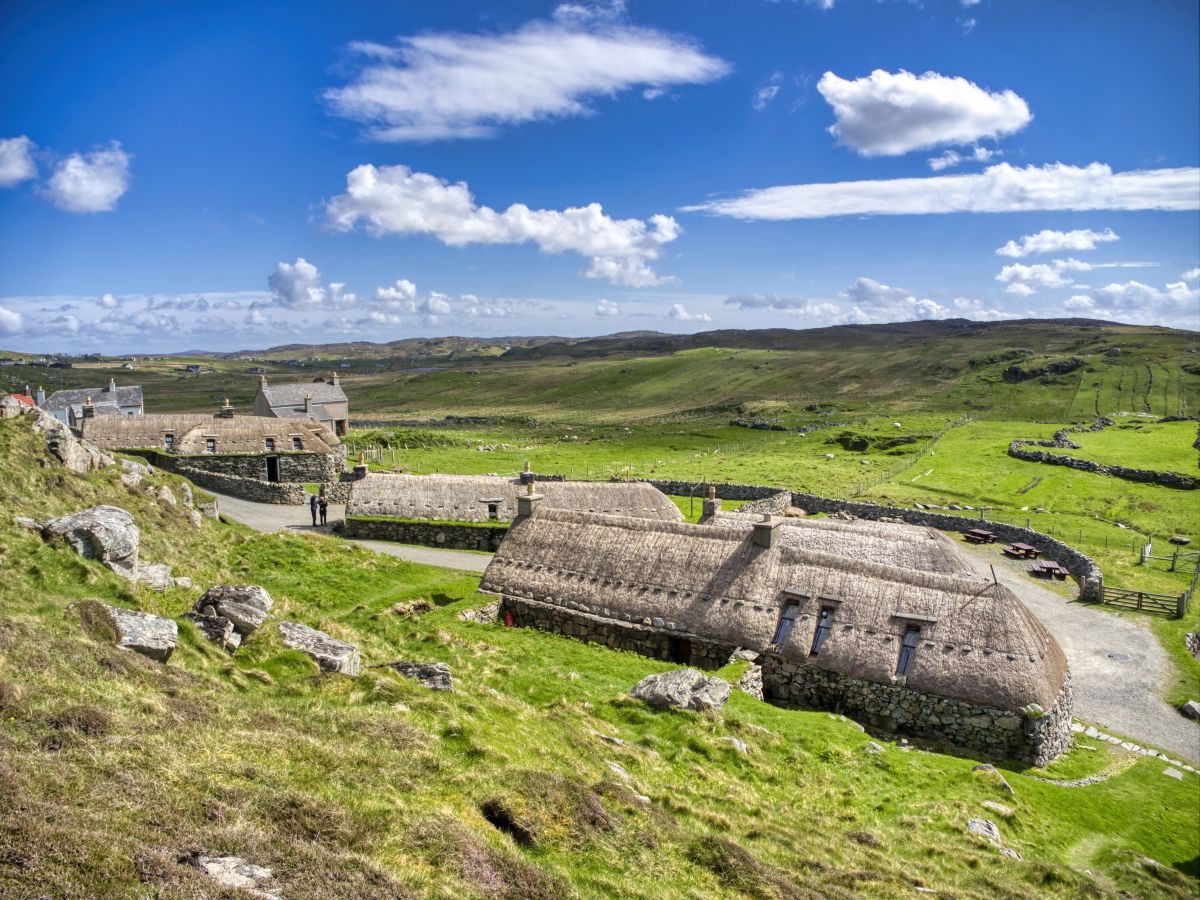
Book Tours in Scotland
The Highlights
1: Gearrannan is the best-preserved example of a traditional thatched blackhouse village in Scotland. Visiting this attraction really is like taking a step back in time, yet the interiors of these age-old buildings are more modern than you may initially think. Gearrannan is a must-visit for anyone with an interest in Scotland’s history and island culture.
2: In addition to the many photo opportunities in the village, the picturesque bay and the breathtaking clifftop views in both directions will astound you (literally and figuratively). The west coast of Lewis may be one of the windiest places in Britain, but that doesn’t detract from the fact that the scenery is nothing short of stunning.
3: Gearrannan is well set up for tourists thanks to a cafe that serves delicious food and drink, a wee gift shop, and an original loom that’s used to craft genuine Harris Tweed. You can even book an overnight stay in a restored blackhouse that caters to families and large groups of up to 16 people.
Visiting Tips
1: It won’t take you long to walk around the blackhouse village—an hour at the most—so you might like to extend your stay by taking a coastal walk. There’s a waymarked trail that starts at the entrance to the bay and continues to Dalmore Beach across rough moorland. The 4-mile route takes approximately 3 hours to complete.
2: There aren’t many places to get food in this part of Lewis so if you’re visiting Gearrannan I recommend filling hungry bellies in the on-site cafe. The food is basic (soup, sandwiches, cakes etc) but it’s tasty, the portions are a decent size, and the price is reasonable.
3: If Gearrannan has whetted your appetite for island history, you might like to drive a few miles north to visit another restored blackhouse at Arnol. Historic Environment Scotland has restored this particular example, and it is accessible every day of the week except for Sunday and Wednesday. The exterior is open year-round.
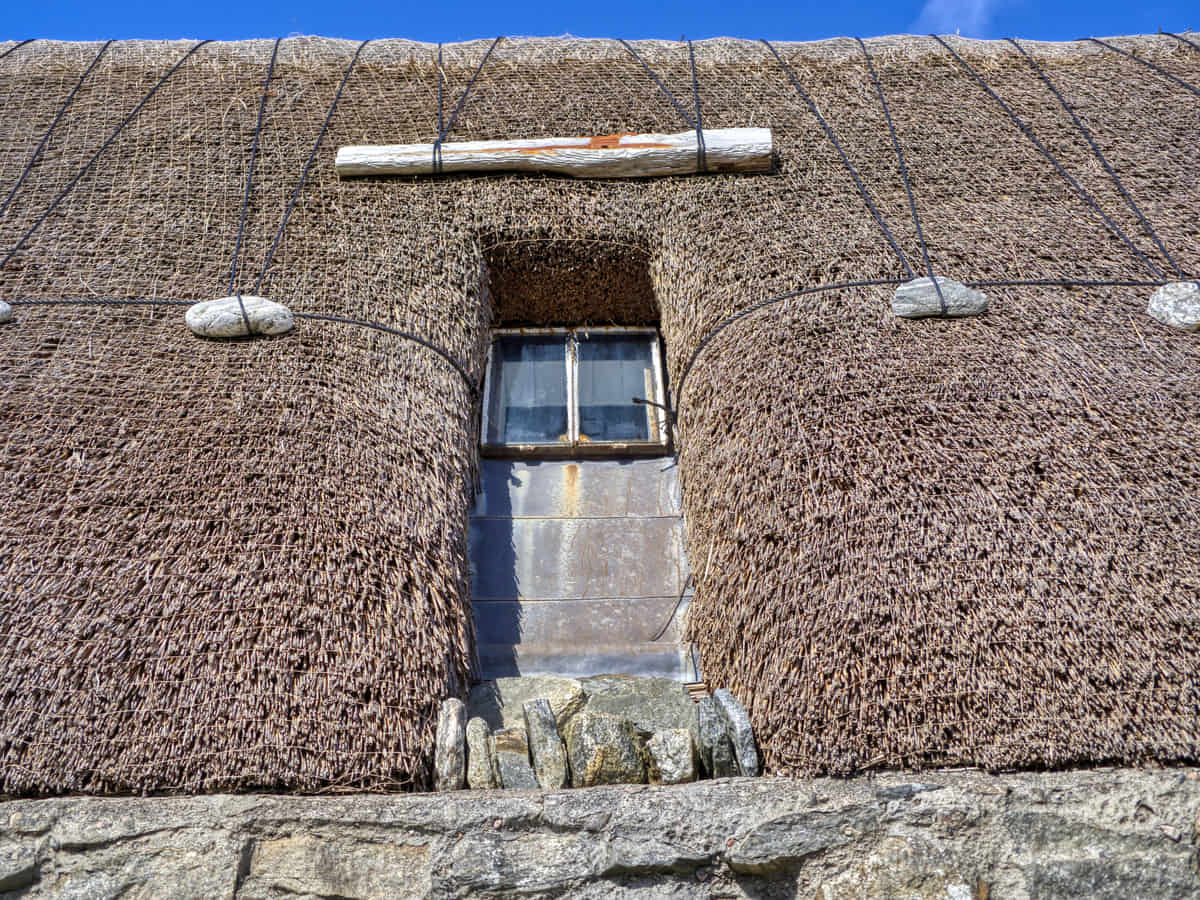
Protect Your Family From Scotland's Biting Midges
- Powerful, reliable protection for up to 8 hours
- Water- and sweat resistant
- Repels midges, mosquitoes, horse flies, sand flies, fleas and ticks
- Safe for use on adults, children over 30 months and pregnant women
- Non-sticky, moisturising with a pleasant fragrance
- Packaging may vary
Tourist Information
As far as the location goes, the Gearrannan Blackhouse Village (signposted Garenin) is rather handy for tourists, with the must-see attraction of the Callanish standing stones just 9 miles to the south and Dun Carloway broch (one of the largest Neolithic forts in Britain) 3 miles to the east.
To get there, follow the A858 to Carloway where you’ll then find brown tourist information signs pointing towards the blackhouses. Be mindful that the roads are single-track, so motorhomes may struggle in peak tourist season as, although there are passing spaces, the roads aren’t really set up for large vehicles.
Once at Gearrannan, you’ll find it has its own car park with plenty of spaces for cars and buses, as well as a couple of disabled spaces. To the south of the car park, there’s a wee gift shop that sells local arts and crafts, while the ticket office is located in the first building in the blackhouse village immediately ahead.
I have to point out that the paths throughout Gearrannan are composed of compacted gravel, so they’re suitable for wheelchairs and buggies, but the doors to the blackhouses themselves are rather narrow. If you have mobility issues, consider calling the visitor centre (01851 643416) for advice before leaving home.
The visitor centre building houses a small gift shop as well as a cafe, followed by a door that leads outside to the first two blackhouses which are the only ones you’re allowed to enter. The remainder have been renovated as holiday homes so bear that in mind when looking around the outside of them as there may be people living inside.
The first port of call is the visitor building which contains the Gearrannan Blackhouse Village museum. Inside, the living area is set up just as it would have been at the turn of the last century, with a big peat-fueled hearth in the centre, wood-panelled walls in the living area and bedroom, and a workshop at the other end of the building where the animals used to be kept.
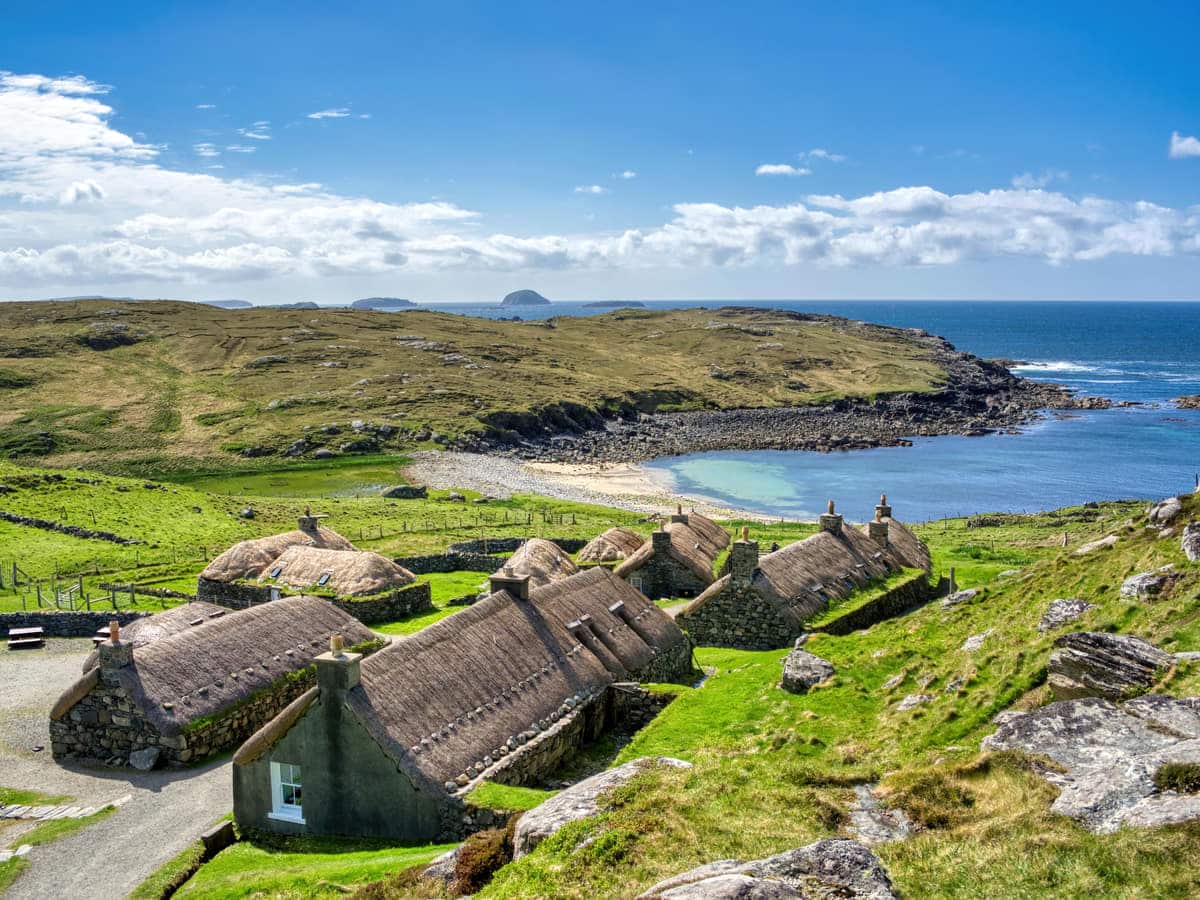
This workshop houses a fine example of a traditional human-powered loom that’s still used to this day to transform wool into the famous Harris Tweed – one of the best-known cloths in the world in addition to having the oldest certification mark in Britain.
The second blackhouse is more of an open-plan building which houses offices at one end and a video display at the other. The video shows early footage taken on the islands in a documentary about island life, the wild landscape, and, of course, the blackhouses.
Surrounding the walls are a series of information boards that go into further detail about Gearrannan and Lewis, but to be honest there’s not much else to see in there. At this point, you might like to wander down the old track that runs through the village to Garenin Bay, which has a pebble beach and a trail that winds its way north along the coastline to Dalmore Beach.
Having walked the trail myself, I thoroughly recommend it (as long as you’re wearing boots; it’s a wee bit muddy), and it’s a great way to finish off a tour of the blackhouses.
How to Get to Gearrannan Blackhouse Village
To get there, you will need to first travel to the Isle of Lewis. Here are two options:
- Fly to Stornoway Airport. There are flights from various cities in Scotland including Edinburgh, Glasgow, and Inverness.
- Take a ferry from Ullapool on the mainland to Stornoway, which is the main port on the Isle of Lewis. The ferry journey takes 3-4 hours.
Once you have arrived on Lewis, Gearrannan Blackhouse Village is located on the west side of the island. It is situated about a 30-minute drive from Stornoway, which lies on the east coast of the island. There are several car rental agencies in Stornoway if you need to rent a car. Alternatively, you can take a tour bus or a taxi to Gearrannan Blackhouse Village. Note that the journey is around 20 miles, so a taxi will be expensive.
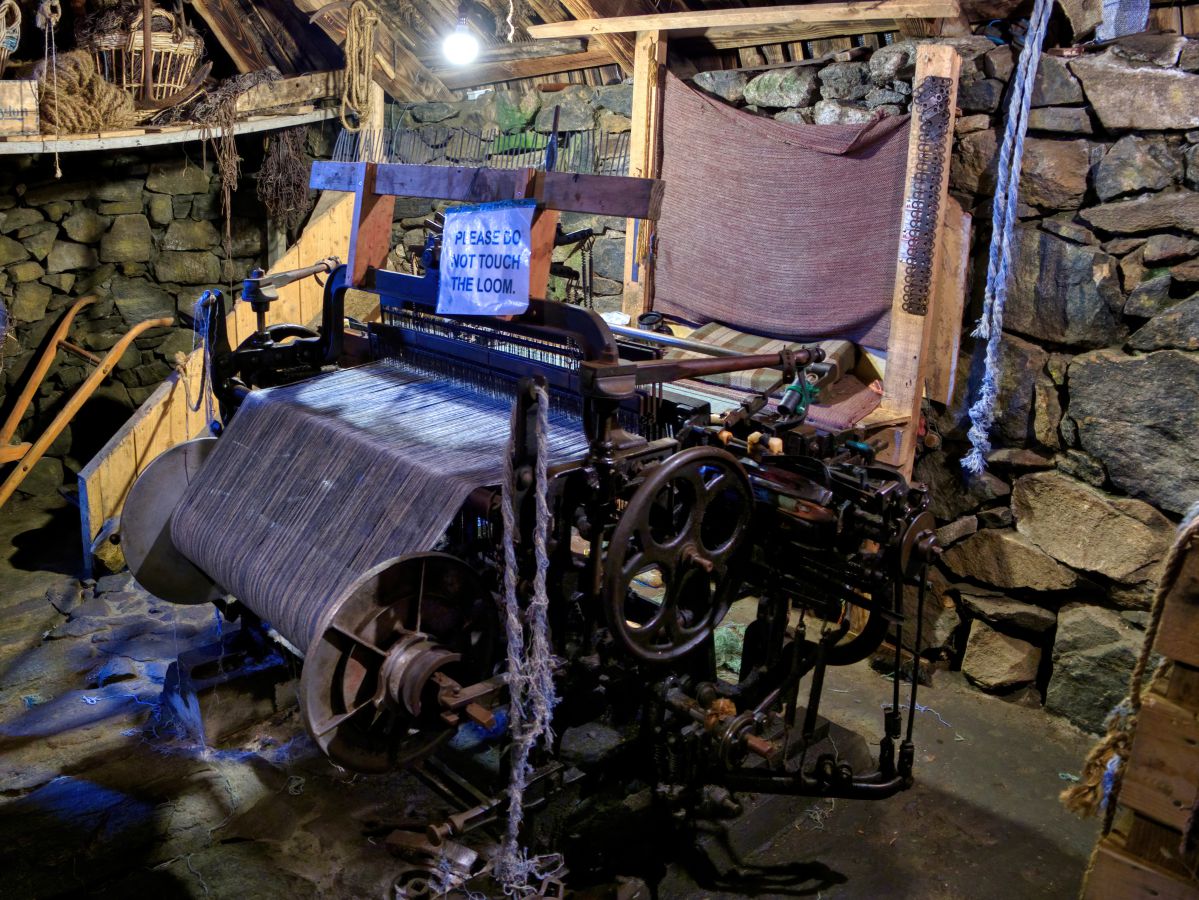
Things to Do
Explore traditional blackhouses: At Gearrannan Blackhouse Village, you can step back in time and explore the faithfully restored traditional blackhouses. These unique stone-walled and thatched-roof houses offer a fascinating glimpse into the past and a chance to learn about the island’s unique heritage and culture.
Attend weaving demonstrations: The village is home to a fully working Harris Tweed weaving shed where you can witness live demonstrations. The intricacies of this age-old craft are fascinating to watch.
Join guided tours: To gain a deeper understanding of the village’s history, join a guided tour. It’s a great way to learn about the daily lives of the villagers in the past and how they survived in such a challenging environment.
Visit the community museum. This small museum offers a wealth of local history. Exhibits and video displays cover various aspects of island life, including traditional industries like fishing and weaving and how the islanders built the enormous blackhouses.
Stay overnight in a blackhouse: For a truly immersive experience, consider staying overnight in a blackhouse. These houses are modernised for comfort but retain their traditional charm, with houses ranging from 2-star group accommodation sleeping 16 to 4-star family cottages.
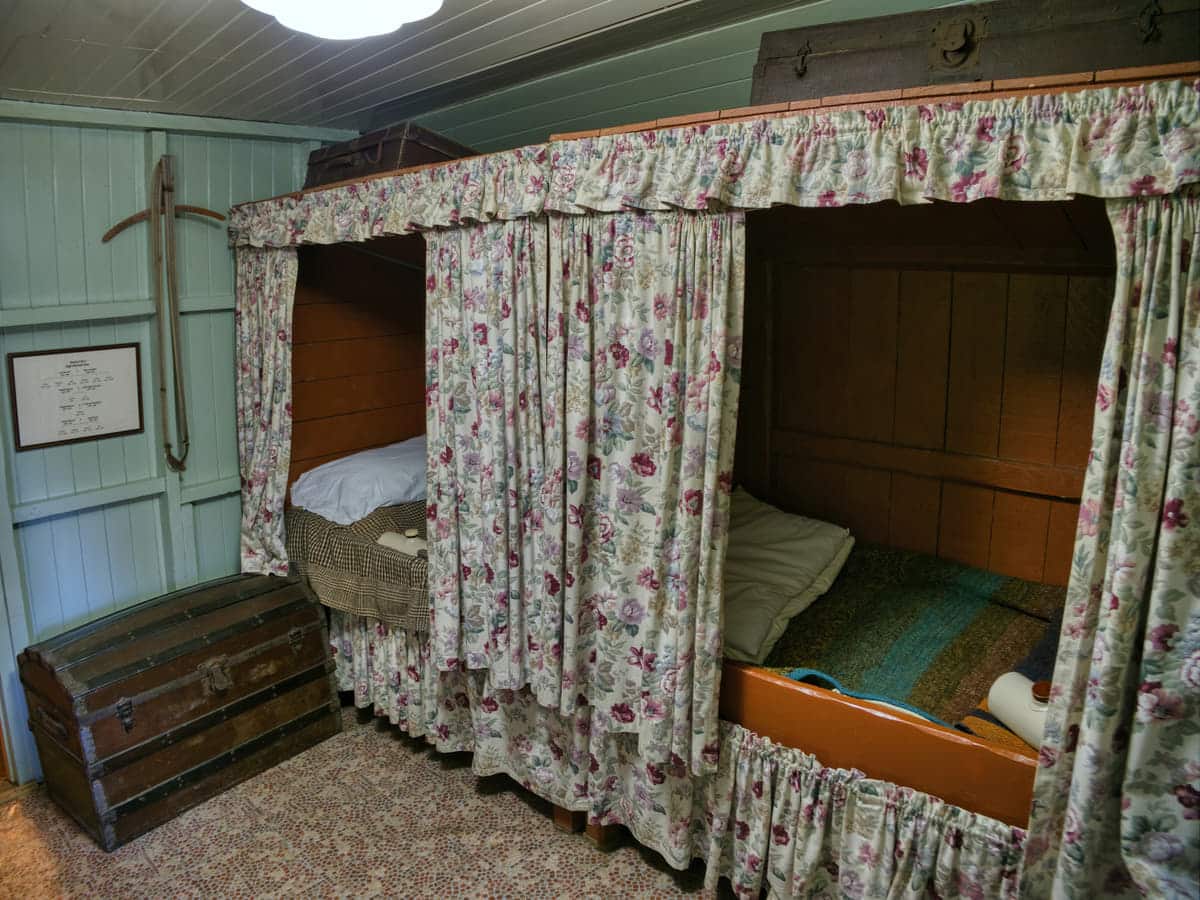
Book Tours in Scotland
Things to Do Nearby
Calanais Standing Stones. Address: Callanish, Isle of Lewis, HS2 9DY. Distance: 9 miles.
Calanais (AKA Callanish) standing stone circle is one of the largest and oldest neolithic stone circles in the world. The stones were erected between 2900 and 2600 BC and comprise a circle of 13 stones with a 16-foot monolith in the centre, surrounded by 5 rows of standing stones.
Arnol Blackhouse. Address: 42 Arnol, Bragar, Isle of Lewis, HS2 9DB. Distance: 10.8 miles.
Historic Environment Scotland is in charge of managing Arnol Blackhouse, a restored traditional thatched blackhouse. Unlike Gerrannan, Arnol Blackhouse is the sole surviving example in the village, though there are the remains of abandoned blackhouses nearby.
Norse Mill and Kiln. Address: Isle of Lewis, HS2 9BJ. Distance: 5.5 miles.
A fine example of two restored Scandanavian buildings situated next to Loch Raoinebhat. There were more than 200 such mills and kilns in the past but few remain today. The kiln was in use until the 1930s. The mill and kiln are free to visit and are accessible via a small car park off the A858.
Dun Carloway Broch. Address: Isle of Lewis, HS2 9AG. Distance: 3 miles.
Dun Carloway is an ancient Scottish fortification (known as a broch) that was built in the 1st century AD. The broch is one of the best-preserved in Scotland with walls standing up to 30 feet tall.
Dalmore Beach. Address: Carloway, Isle of Lewis, HS2 9AD. Distance: 4 miles.
With cliffs enclosing it and a number of sea stacks dotting the coastline, Golden Sand Beach is located in a small bay. Dalmore Beach is frequently listed as the top beach on Lewis.
Frequently Asked Questions
When did people stop living in blackhouses?
The design of Scottish blackhouses originated several thousand years ago, consisting of a twin-walled building that had a layer of insulating peat in the gap between the stone walls.
This design proved resistant to Scotland’s west coast weather and was unrivalled until a new design (named ‘white houses’) arrived, which separated the living quarters between animals and people.
As modern building techniques were brought onto the islands, the traditional blackhouses fell out of favour, and most of them were abandoned by the early 1900s.
The last permanent residents of Scottish blackhouses finally moved out for good in the 1980s.
Today, many of the old buildings have been renovated and are now used as holiday accommodations.
What is a Scottish black house?
A Scottish black house is a type of traditional dwelling that was commonly found in the Hebrides, a group of islands off the northwest coast of Scotland. These houses were typically small, rectangular structures that were built using locally available materials.
The interiors of the houses were often divided into two main areas: a living area and a byre (or cow shed). The living area was typically used for cooking, sleeping, and other household activities, while the byre was used to house livestock during the winter months.
Why is it called a blackhouse?
The origin of the name ‘blackhouse’ can be traced to three potential reasons. First, these dwellings had no chimney, leading to the roof becoming lined with a layer of black soot.
Second, while blackhouses housed people as well as animals, a new design moved animals into separate buildings, and islanders differentiated the two designs with the names blackhouse and whitehouse. Third, the Gaelic word ‘dubh’, meaning black, sounds similar to the Gaelic word ‘tughadh’, meaning thatch.
How old are Scottish blackhouses?
The original design for Scottish blackhouses is believed to date back at least 5,000 years. The earliest known examples can be seen in the Neolithic village of Skara Brae in Orkney. The last blackhouses to be built date from the late 1800s.
How do you get to Gearrannan Blackhouse Village?
Gearrannan Blackhouse Village is located 25 miles west of Stornoway on the Isle of Lewis, Outer Hebrides.
To get there, follow the signs to Carloway on the A858 and then follow the brown tourist information signs to Gearrannan.
The address is: Garenin, Isle of Lewis, HS2 9AL.
What were Blackhouses made of?
Blackhouses were typically constructed using locally available materials such as stone and turf and were often thatched with straw or heather. The walls of the blackhouses were usually thick and made of stone, while the roofs were steeply pitched to allow rainwater to easily run off.
Protect Your Family From Scotland's Biting Midges
- Powerful, reliable protection for up to 8 hours
- Water- and sweat resistant
- Repels midges, mosquitoes, horse flies, sand flies, fleas and ticks
- Safe for use on adults, children over 30 months and pregnant women
- Non-sticky, moisturising with a pleasant fragrance
- Packaging may vary



